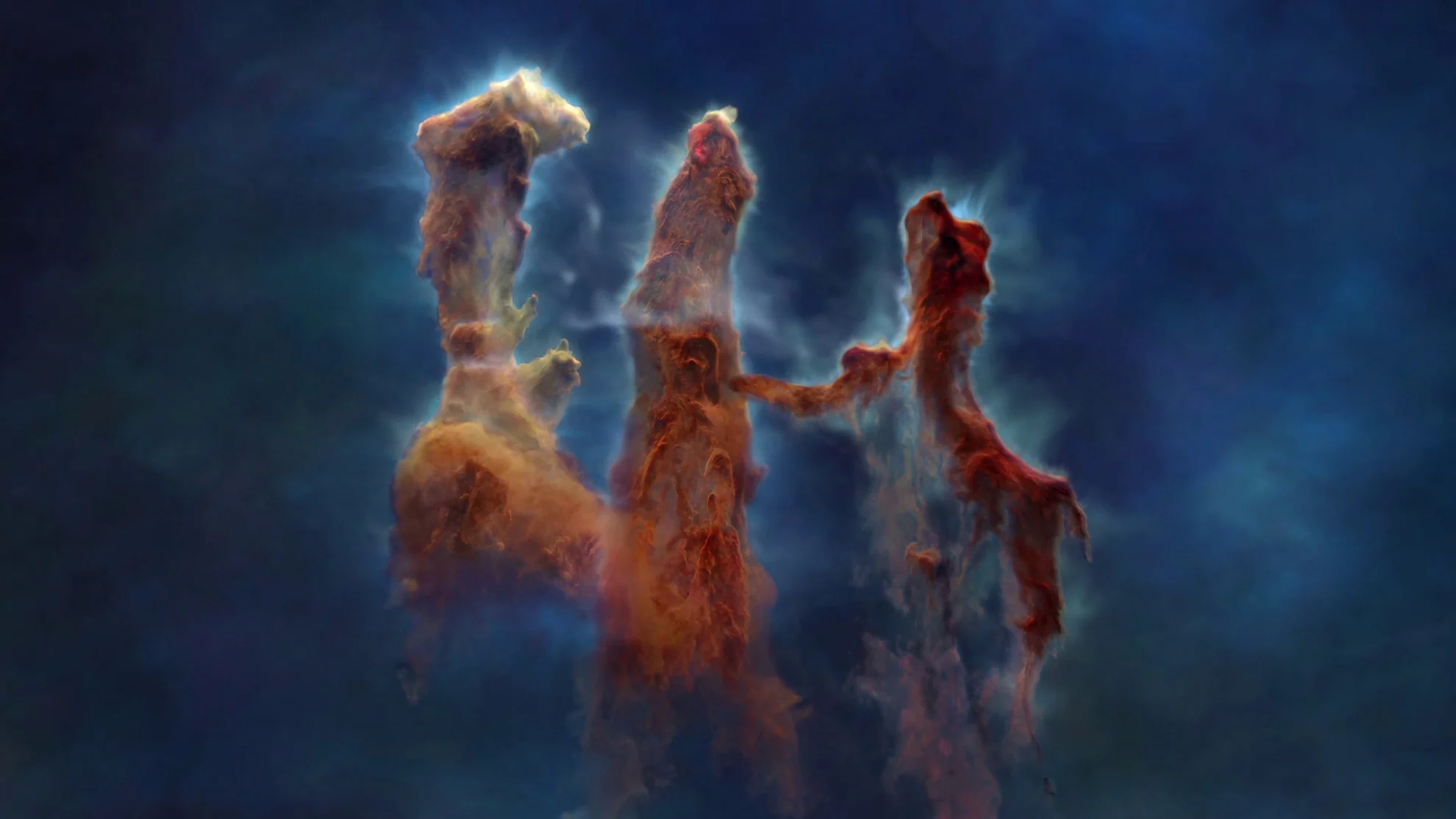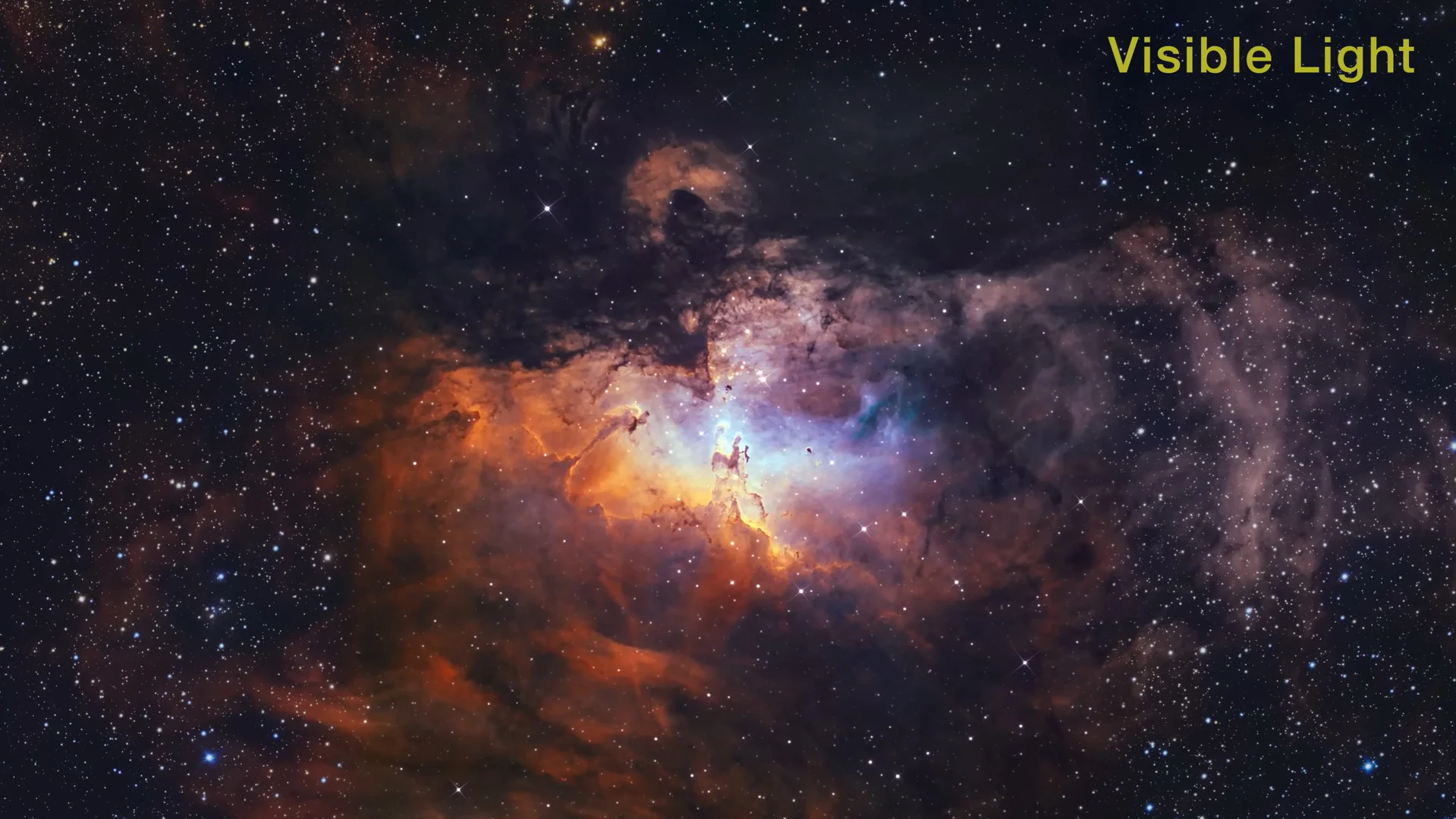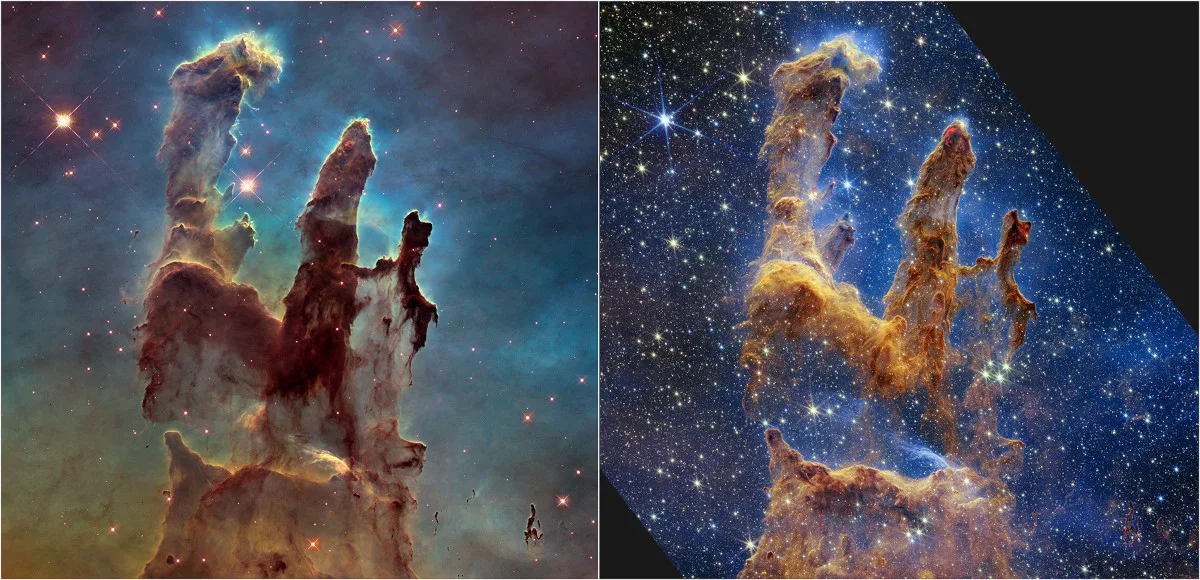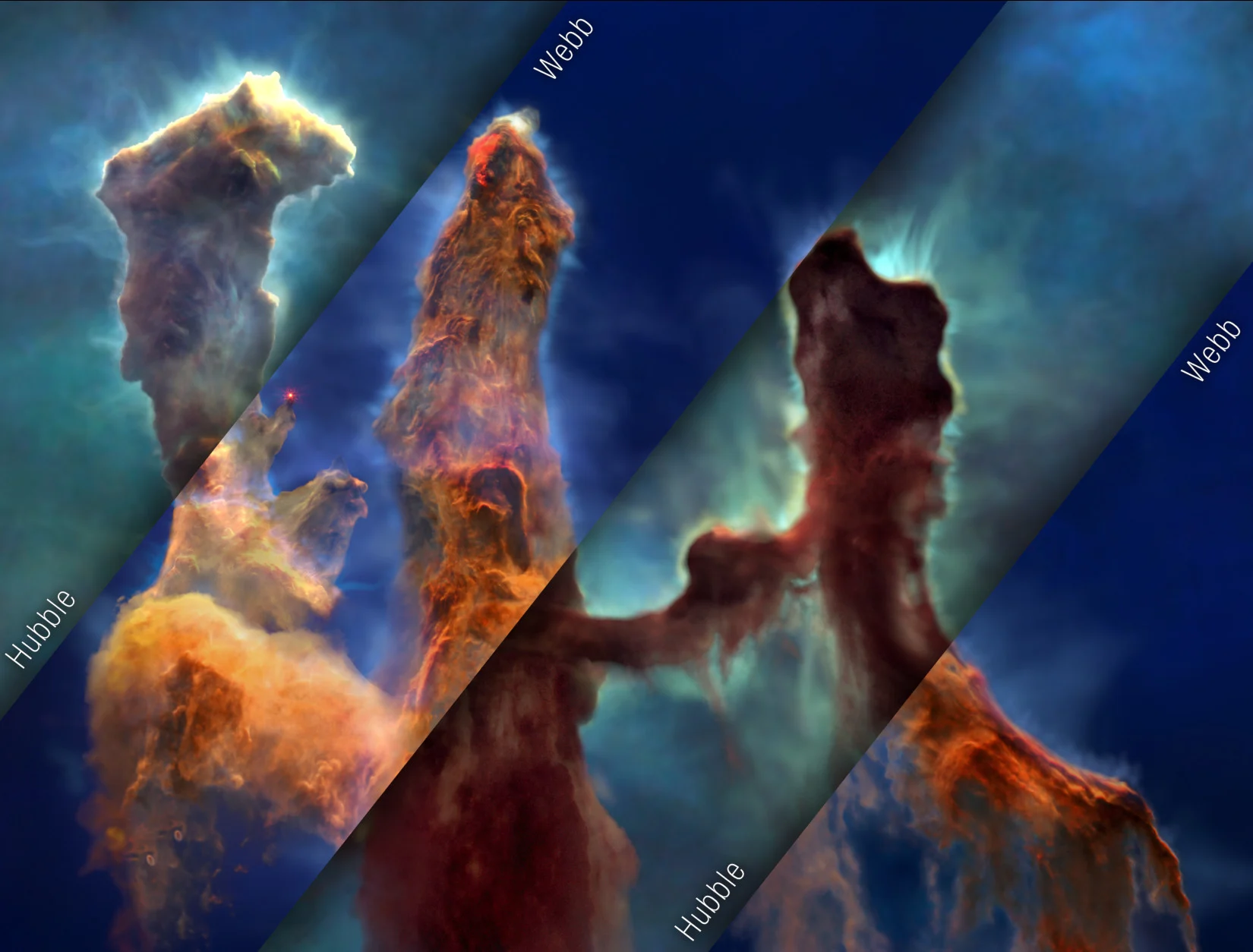
Spectacular new "3D" Pillars of Creation merges Hubble and Webb views
"When we combine observations from NASA's space telescopes across different wavelengths of light, we broaden our understanding of the universe."
One of the most famous objects in space has been imaged by our most powerful telescopes, and now scientists have produced an amazing 3D visualization of The Pillars of Creation, revealing it in greater detail than ever before.
Roughly 7,000 light years away from Earth is an immense cloud of dust and gas known as the Eagle Nebula. At the heart of this cloud is one of the most well-imaged objects in space — The Pillars of Creation.

The Eagle Nebula, a cluster of stars, dust and gas, located in the Serpens constellation. Standing out against the bright core of the nebula are the famous Pillars of Creation. (NASA/STSci)
First revealed to us nearly 30 years ago by the Hubble Space Telescope, our view of the Pillars of Creation has been updated again and again. First, Hubble returned to observe it nearly a decade ago, returning even higher resolution images of this star-forming region.
Then, in 2022, astronomers aimed the new James Webb Space Telescope at this same region of space.

A comparison of Hubble's visible light image (left) with Webb's infrared view (right) of the Pillars of Creation. (Hubble image: NASA, ESA, and the Hubble Heritage Team (STScI/AURA). Webb image: NASA, ESA, CSA, STScI; Joseph DePasquale (STScI), Anton M. Koekemoer (STScI), Alyssa Pagan (STScI))
With Webb's more advanced cameras and deeper view into the infrared spectrum, it treated us to the best, and highest resolution view of the Pillars that we had ever seen.
Now, though, a team of scientists has combined the Hubble and Webb observations, producing a three-dimensional model of the Pillars of Creation.
Watch below: The Pillars of Creation and the Interplay of Stars and Dust
According to NASA, the narrated video above "combines a direct connection to the science and scientists of NASA's Astrophysics missions with attention to the needs of an audience of youth, families, and lifelong learners. It enables viewers to explore fundamental questions in science, experience how science is done, and discover the universe for themselves."
"Several stages of star formation are highlighted in the visualization. As viewers approach the central pillar, they see at its top an embedded, infant protostar glimmering bright red in infrared light," NASA explained. "Near the top of the left pillar is a diagonal jet of material ejected from a newborn star. Though the jet is evidence of star birth, viewers can't see the star itself. Finally, at the end of one of the left pillar's protruding 'fingers' is a blazing, brand-new star."

A mosaic of Hubble and Webb images of the Pillars of creation reveal the different formations in the gas clouds that are highlighted by each individual telescope — wispy gas streamers by Hubble and the stunning details of the pillars themselves by Webb. (Greg Bacon, Ralf Crawford, Joseph DePasquale, Leah Hustak, Christian Nieves, Joseph Olmsted, Alyssa Pagan, and Frank Summers (STScI), NASA's Universe of Learning)
"By flying past and amongst the pillars, viewers experience their three-dimensional structure and see how they look different in the Hubble visible-light view versus the Webb infrared-light view," Frank Summers of the Space Telescope Science Institute (STScI) explained in a NASA press release. "The contrast helps them understand why we have more than one space telescope to observe different aspects of the same object."
"When we combine observations from NASA’s space telescopes across different wavelengths of light, we broaden our understanding of the universe," added Mark Clampin, the Astrophysics Division director at NASA Headquarters. "The Pillars of Creation region continues to offer us new insights that hone our understanding of how stars form. Now, with this new visualization, everyone can experience this rich, captivating landscape in a new way."
Thumbnail image combines Hubble visible light images with Webb infrared data, resulting in a highly detailed view of the Pillars of Creation. Courtesy NASA and the Space Telescope Science Institute (STScI)











